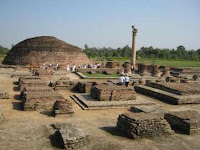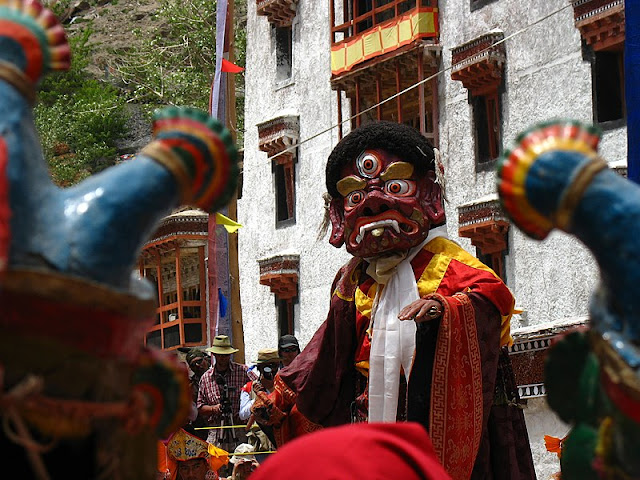One of the most famous figures of Indian history, Shivaji was the founder of the Maratha kingdom. The rise of Marathas is considered to be a revival of Hinduism in the seventeenth century. A brilliant leader, Shivaji was a just ruler and a statesman of consummate craft. He always respected the religion of his adversaries.Belonging to the Bhonsle clan, Shivaji was born in the hill-fort of Shivneri near Junnar (in the Pune district of Maharashtra) in 1630. According to one school of thought, he was born in 1627. His grandfather Maloji was employed with the Nizam Shahi rulers of Ahmednagar. Shahji, eldest son of Maloji and father of Shivaji, was initially in the service of the Ahmednagar kingdom as a trooper in the army.
Shahji was married to Jijabai, daughter of a noble in the service of Nizam Shahi Kingdom. Jijabai, who was a virtuous lady and had a profound impact on Shivaji, was the daughter of Lakhuji Jadav Rao, who claimed descent from the Yadavas of Devagiri.
Shahji was soon able to earn fame and occupied a place where he could play an important role in the political and military affairs of Nizam Shahi kingdom. He fought against the Mughals in 1336, the year Ahmednagar was annexed to the Mughal Empire by Shah Jahan, the fifth Mughal emperor. Shahji then entered the service of the Adil Shahi rulers of the Bijapur kingdom. Shahji moved to his new jagir with his second wife after entrusting his paternal jagir of Poona and the care of his young son Shivaji and his mother Jijabai to an able Brahmana, Dadaji Khonddev who was earlier employed in the service of the Adil Shahi rulers.
Shivaji directed his early military campaign against the Adil Shahi dynasty of Bijapur. He was wise enough not to offend the Mughals now as it would not be a viable proposition to fight on two fronts given his military strength at that time. In 1653 Shivaji captured Kalyan, an important and wealthy Adil Shahi city on the west coast. From 1657 to 1660, Shivaji became successful in plundering several territories belonging to the Bijapur kingdom. This earned the ire of the Adil Shahi ruler. Ali Adil Shah sent in 1659, Afzal Khan, one of the foremost nobles and generals of Adil Shahi, to bring Shivaji back to Bijapur dead or alive. In order to apprehend Shivaji, Afzal Khan proposed a meeting with Shivaji, promising him pardon and grant of territory. In the meeting that ensued Afzal Khan tried to attack Shivaji with a dagger while embracing him. But wily Shivaji was able to kill Afzal with gloves with steel claws (bahgh nakh).
Meanwhile when the Mughal emperor Aurangzeb heard of Shivaji’s depredation, he deputed his maternal uncle Shayista Khan to the Deccan to crush the Maratha. Early in 1660, a joint attack by the Mughals and Adil Shahis was launched against Shivaji, who being a skillful strategist, embarked on a surprise attack at the well-guarded mansion of Shayista Khan in Poona in 1663. In the scuffle Shaista Khan lost his thumb and his son, Abul Fath, was killed. This incident served a body-blow to the Mughal prestige in the Deccan. Aurangzeb recalled Shayista Khan (Shaista Khan) and appointed his own son Shah Alam as Viceroy of the Deccan.
In the following year (1664) Shivaji sacked Surat, the richest port on the west, facing no opposition from the Mughal troops. Thus Shivaji continued to annoy Aurangzeb.
In 1665, Mirza Raja Jai Singh of Amber, Aurangzeb’s Hindu general, and Dilir Khan were entrusted by Aurangzeb with the task of suppressing Shivaji. Jai Singh was able to tactfully put Shivaji in the dock and concluded a treaty with him, known as the treaty of Purandar (1665). Under the terms of the treaty, Shivaji was allowed to retain 12 of his forts, including Raigarh while ceding 23 of his forts to the Mughals.
After the treaty of Purandar, Shivaji visited the Mughal court at Agra. He was humiliated by Aurangzeb there. His great escape from the Mughal court is a famous fact of history.
After returning to the Deccan in 1666 Shivaji for three years shied away from military campaigns and devoted his time reorganizing his internal administration. On the other hand, Shah Alam, the Mughal viceroy in the Deccan, also adopted a conciliatory policy and Aurangzeb granted Shivaji the title of ‘raja’ and his son Shambaji was granted a mansab and jagir in Berar. However, hostilities once again started when Aurangzeb attacked a part of the jagir in Berar. Shivaji sacked Surat for the second time in 1670. He was able to recover almost all the forts ceded to the Mughals.
Shivaji was at his zenith of power and on the 16th June, 1674, he arranged his grand coronation at Raigarh with great pomp and splendour, and assumed the title of Chhatrapati (Lord of the Umbrella, or king of kings). He also introduced a new era of his own, starting from his coronation.
Shivaji died a premature death at the age of fifty-three (or fifty, according to some) on the 14th April, 1680.







.jpg)



